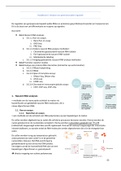Tentamen (uitwerkingen)
Test Bank For The Cosmic Perspective 7th Edition By Jeffrey O. Bennett, Megan O. Donahue, Nicholas Schneider, Mark Voit
- Vak
- Instelling
- Boek
Test Bank For The Cosmic Perspective 7th Edition By Jeffrey O. Bennett, Megan O. Donahue, Nicholas Schneider, Mark Voit
[Meer zien]




